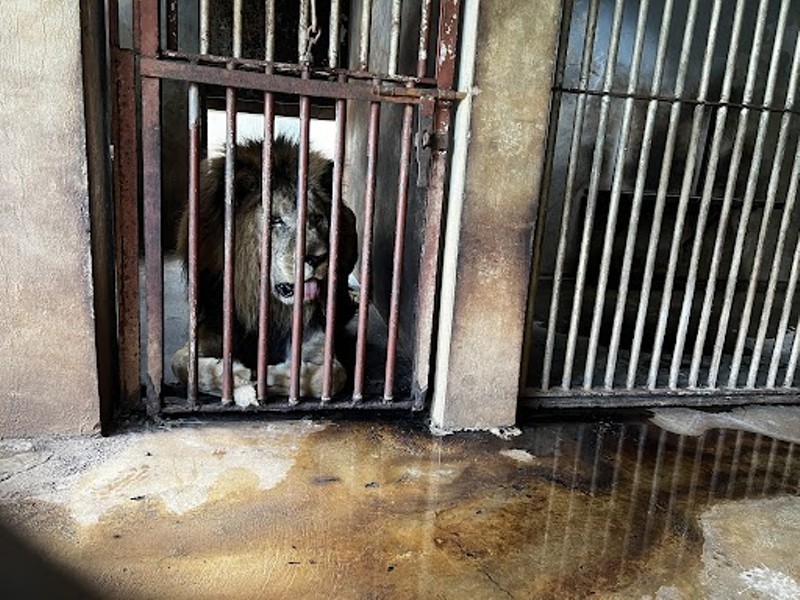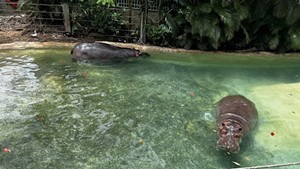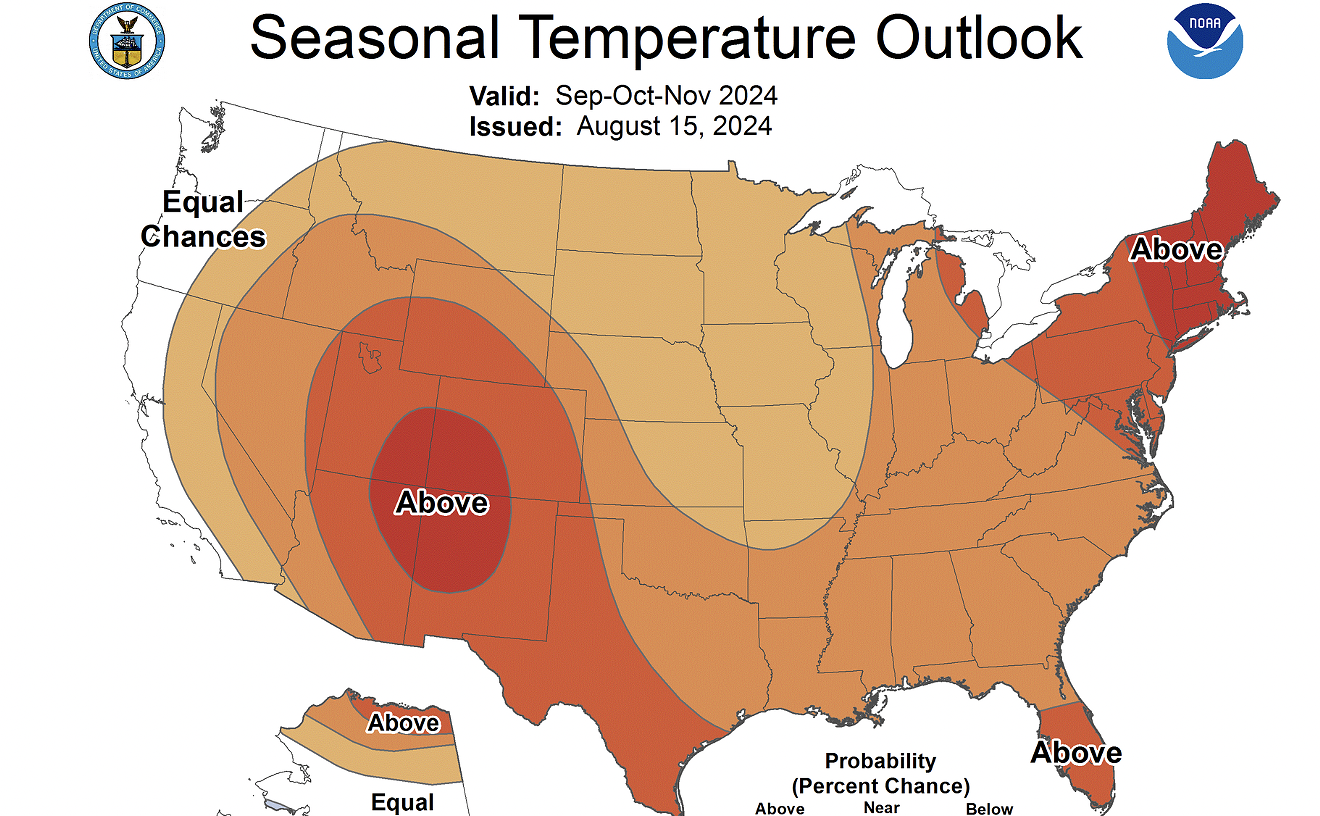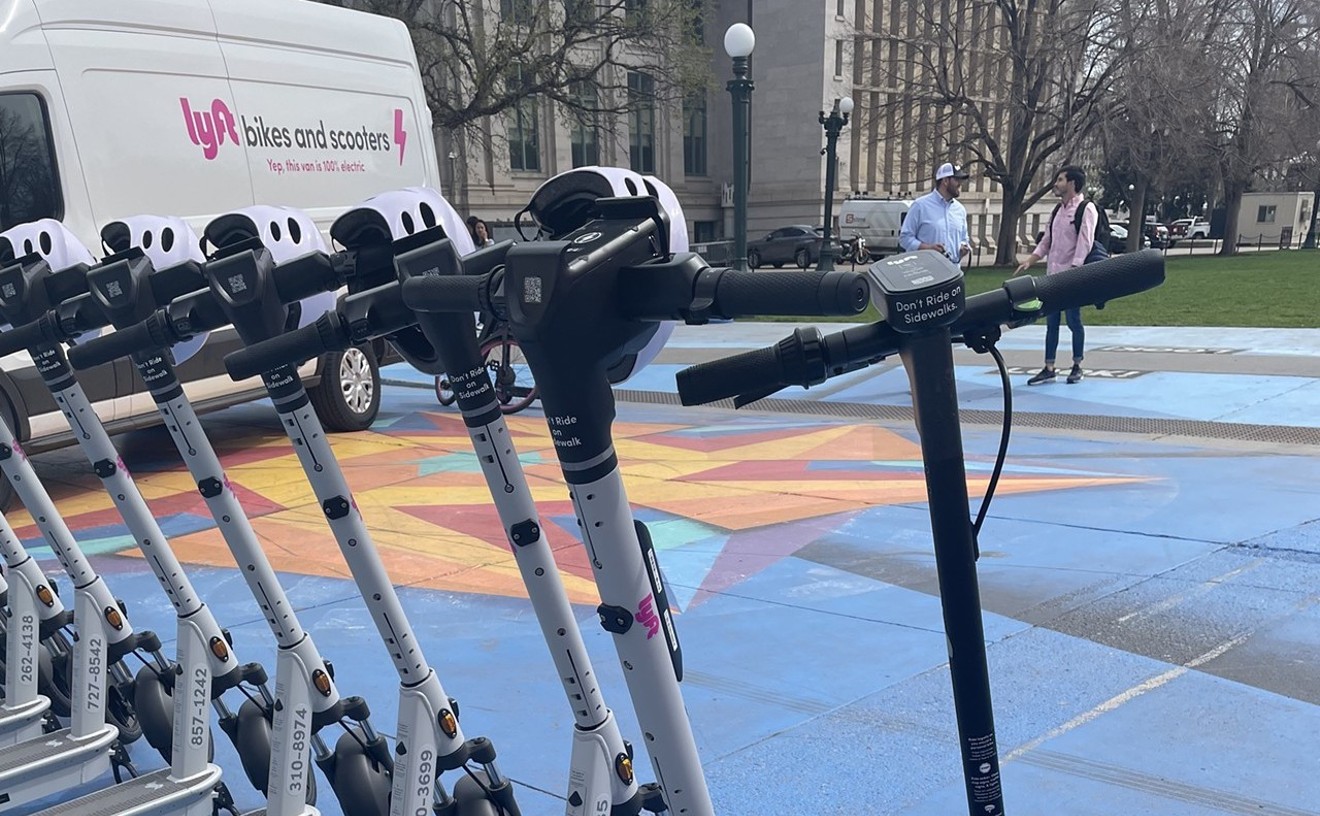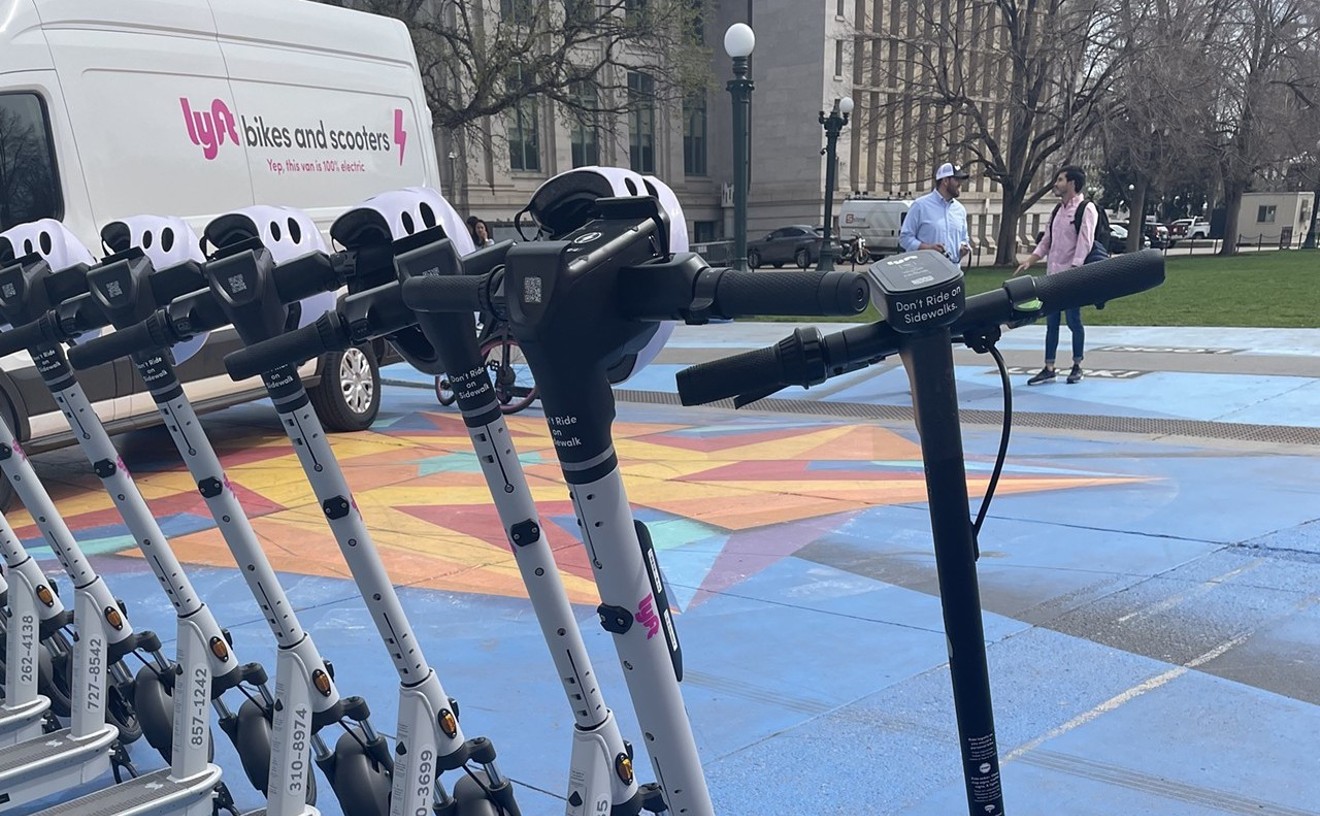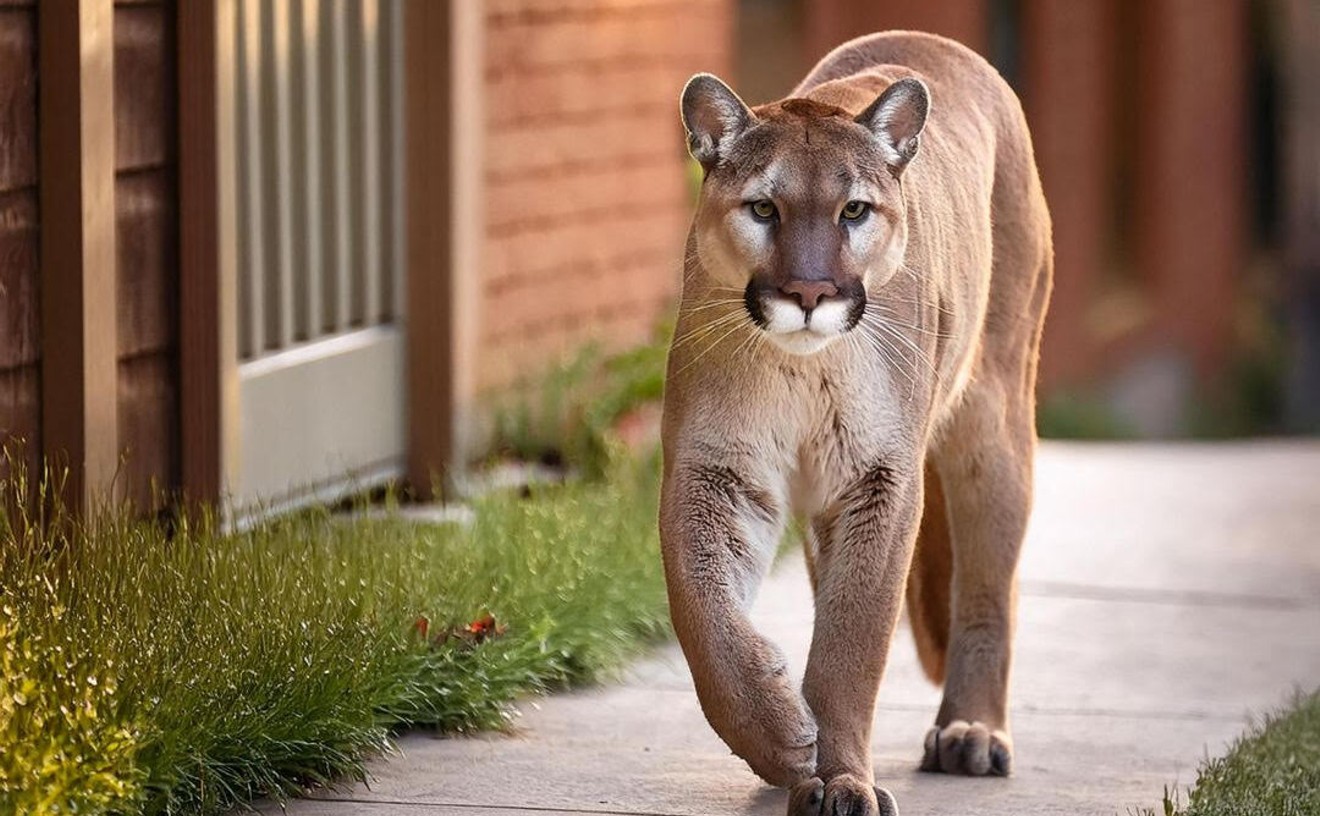African lions and black bears rescued from a defunct zoo in Puerto Rico will be coming to The Wild Animal Sanctuary in Keenesburg next week, and the facility is asking for people to chip in to rescue the creatures' fellow captives in the coming months.
In January, the Department of Justice contacted Pat Craig — who founded TWAS — asking him to help resettle the hundreds of animals left in desolate conditions at the Juan A. Rivero Zoo in Puerto Rico, which closed in 2017 because of mismanagement and a lack of funds.
The goal is to get all of the animals out before hurricane season begins, and TWAS needs donations to make it happen.
“Hurricane season comes in late July,” Craig says. “Every year goes by, and it’s kind of like playing Russian Roulette on another big hurricane.”
TWAS has worked with the U.S. Department of Agriculture and the national Fish & Wildlife Service on animal rescues over the years. The organization even collaborated with the DOJ to provide new homes for animals that had been at Greater Wynnewood Exotic Animal Park — the subject of Netflix’s Tiger King series.
When it came time to appoint an organizer to help the animals left in Puerto Rico, DOJ officials thought that Craig and TWAS would be up to the task. “We said, ‘Well, it's a pretty big undertaking, but, yeah, we do believe that we’re one of the few places in the States that could actually do this,’” Craig remembers.
In March, he traveled to Puerto Rico to help organize the process of finding new homes for the many animals left at the zoo. The USDA had cited the zoo many times for poor treatment of animals before its 2017 closing; at that point, TWAS was going to take on the lions and bears, but when Hurricane Irma and Hurricane Maria struck the island later that year, those plans were put on hold.
During and after the hurricanes, many zoo animals escaped or died, and the zoo fell into even worse disarray despite being granted nearly $6 million from FEMA to rebuild.
“A lot of the reason that they've wasted away for the last twelve years is just because nobody could ever agree on anything,” Craig says. “It was this ongoing thing where everybody just loved to argue and talk. Meanwhile, the animals were dying, just because nobody can come to a consensus.”
Finally, the DOJ made the decision to get the animals out itself, calling in TWAS to do so.
So far, Craig estimates that 95 percent of the animals have been matched with their new homes. But many, such as Felipe, an African white rhino, and two elderly hippopotamuses, are waiting for the funds needed to fly them to their new home in Texas.
Flight costs vary by species. Some animals, such as snakes, can fly commercially, but others require specialized charter flights. Transport for heavier animals like elephants, hippos and rhinos can cost $500,000 just for one flight. All of the funding is coming from donations to TWAS.
“The Department of Justice would absolutely love to give money if they had it,” Craig says. “That's kind of what nonprofits are about. They're trying to fill the gap that isn't getting filled by the government.”
Although many animals can find a home at the original sanctuary in Keenesbury, its 9,700-acre refuge in southeastern Colorado, or the bear-and-big-cat sanctuary in Texas that TWAS took over in 2020, could accommodate others. Craig emphasizes that it’s all about finding the best place for each animal.
“We want the animals to have the best life possible,” he says. “They’ve been living in the worst way, so anything's an upgrade, but that doesn't mean we just sell them short and put them in the first thing that we find.”
Part of the relocation consideration is whether an organization has the ability to care for the animals, and the other is distance. For example, Florida and Texas are better locations than Hawaii because they’re closer to Puerto Rico, decreasing flight times. Craig estimates around thirty to forty of the creatures will end up under TWAS’s direct care. There are still large herds of sheep and deer looking for new homes ,along with snakes and caimans needing rescue, he notes.
People can help animals that have been matched with new homes by donating to TWAS. Donors can write “PUERTO RICO RESCUE” in the comment box if they want their donation to go specifically to the project.
“This is a really important effort,” Craig says. “Year after year, it was ‘Oh, we should have done this or we could have done that.’ Meanwhile, nobody did anything. Close to 1,000 animals died in the last twelve years because of that inaction. Now it’s time to make action, and the only way we can do the action is with support from the people.”

Audio By Carbonatix
[
{
"name": "Air - MediumRectangle - Inline Content - Mobile Display Size",
"component": "12017618",
"insertPoint": "2",
"requiredCountToDisplay": "2",
"watchElement": ".fdn-content-body",
"astAdList": [
{
"adType": "rectangle",
"displayTargets": "mobile"
}
]
},{
"name": "Editor Picks",
"component": "17242653",
"insertPoint": "4",
"requiredCountToDisplay": "1",
"watchElement": ".fdn-content-body",
"astAdList": [
{
"adType": "rectangle",
"displayTargets": "desktop|tablet"
},{
"adType": "rectangle",
"displayTargets": "desktop|tablet|mobile"
}
]
},{
"name": "Inline Links",
"component": "18838239",
"insertPoint": "8th",
"startingPoint": 8,
"requiredCountToDisplay": "7",
"maxInsertions": 25
},{
"name": "Air - MediumRectangle - Combo - Inline Content",
"component": "17261320",
"insertPoint": "8th",
"startingPoint": 8,
"requiredCountToDisplay": "7",
"maxInsertions": 25,
"watchElement": ".fdn-content-body",
"astAdList": [
{
"adType": "rectangle",
"displayTargets": "desktop|tablet"
},{
"adType": "rectangle",
"displayTargets": "desktop|tablet|mobile"
}
]
},{
"name": "Inline Links",
"component": "18838239",
"insertPoint": "8th",
"startingPoint": 12,
"requiredCountToDisplay": "11",
"maxInsertions": 25
},{
"name": "Air - Leaderboard Tower - Combo - Inline Content",
"component": "17261321",
"insertPoint": "8th",
"startingPoint": 12,
"requiredCountToDisplay": "11",
"maxInsertions": 25,
"watchElement": ".fdn-content-body",
"astAdList": [
{
"adType": "leaderboardInlineContent",
"displayTargets": "desktop|tablet"
},{
"adType": "tower",
"displayTargets": "mobile"
}
]
}
]

